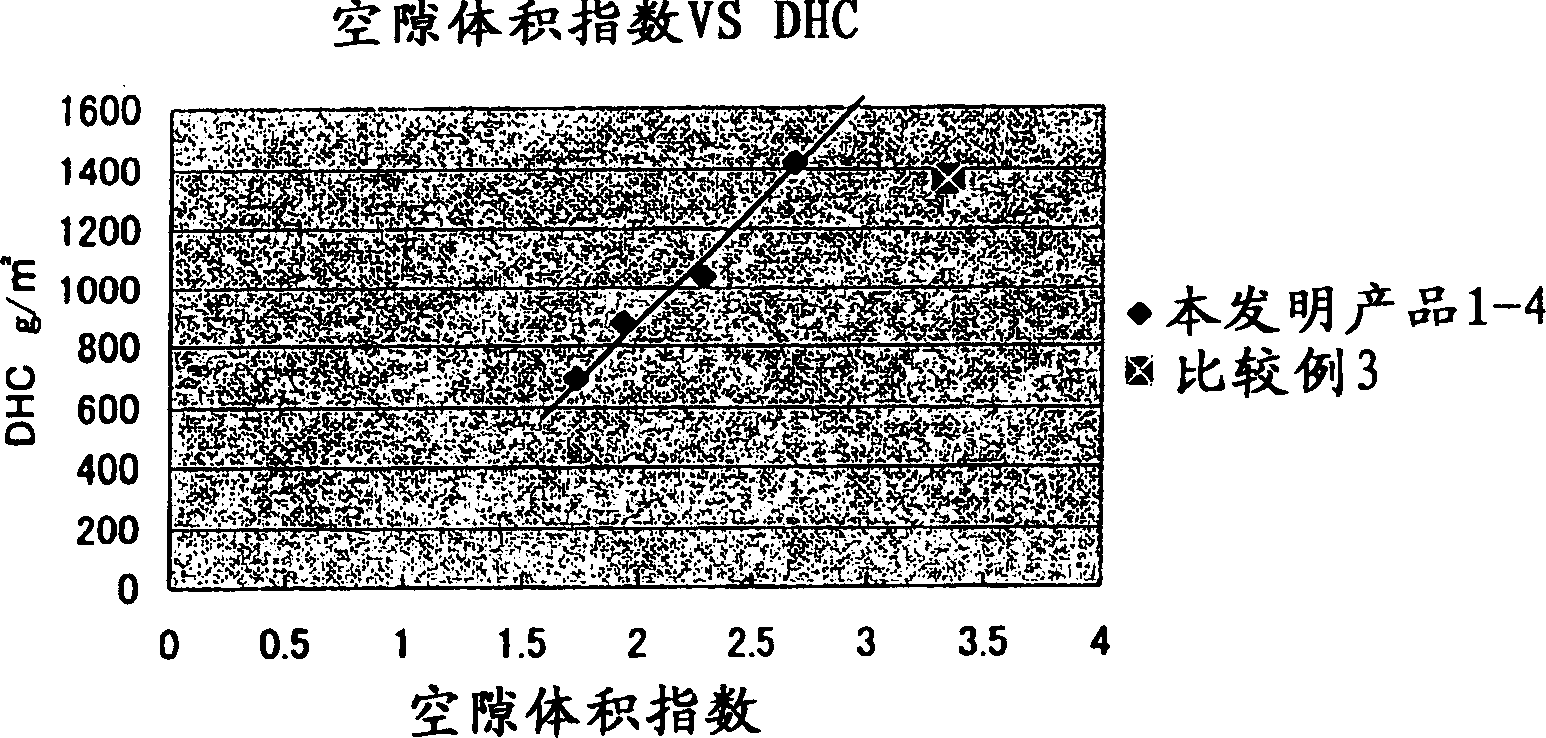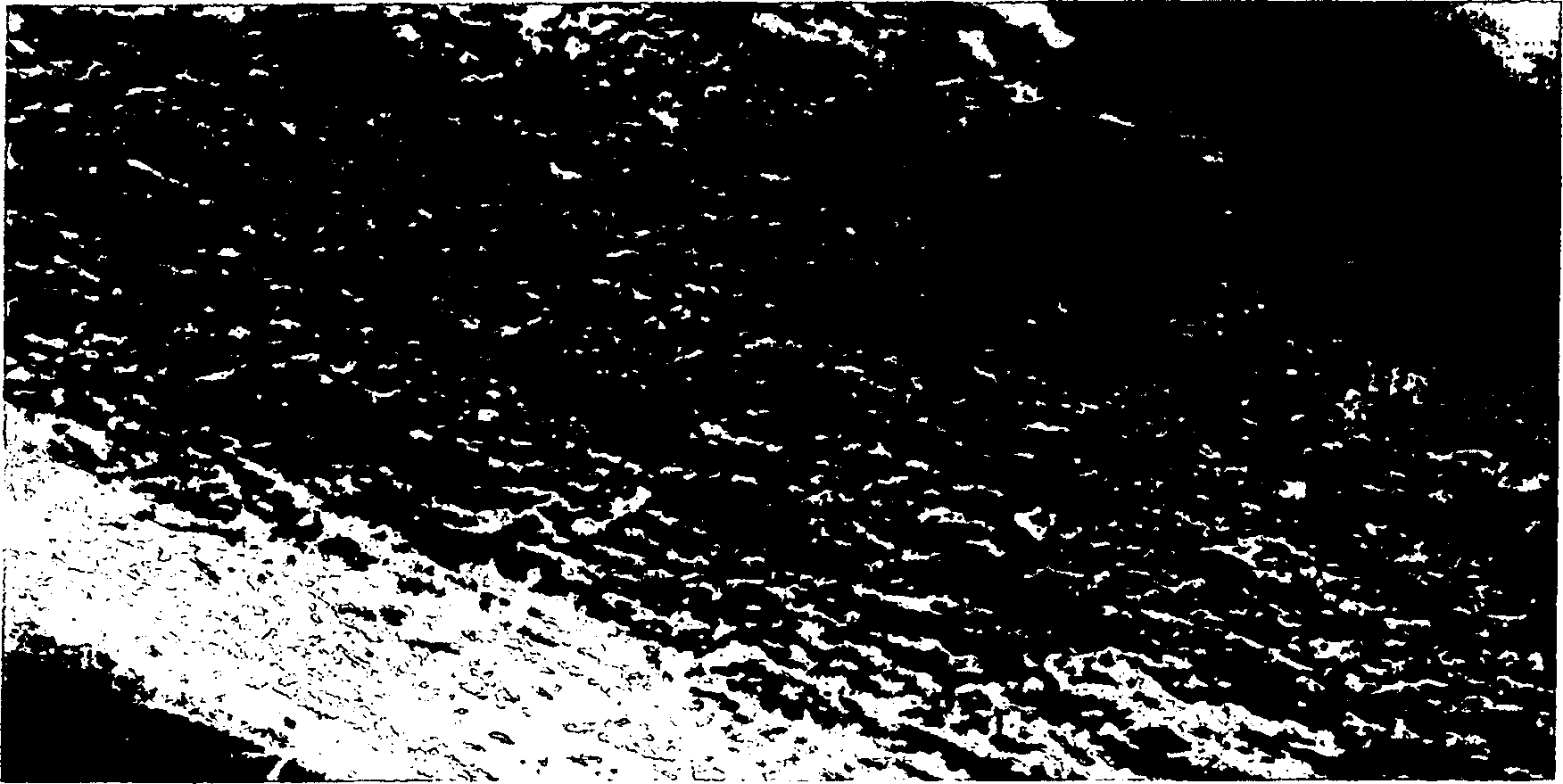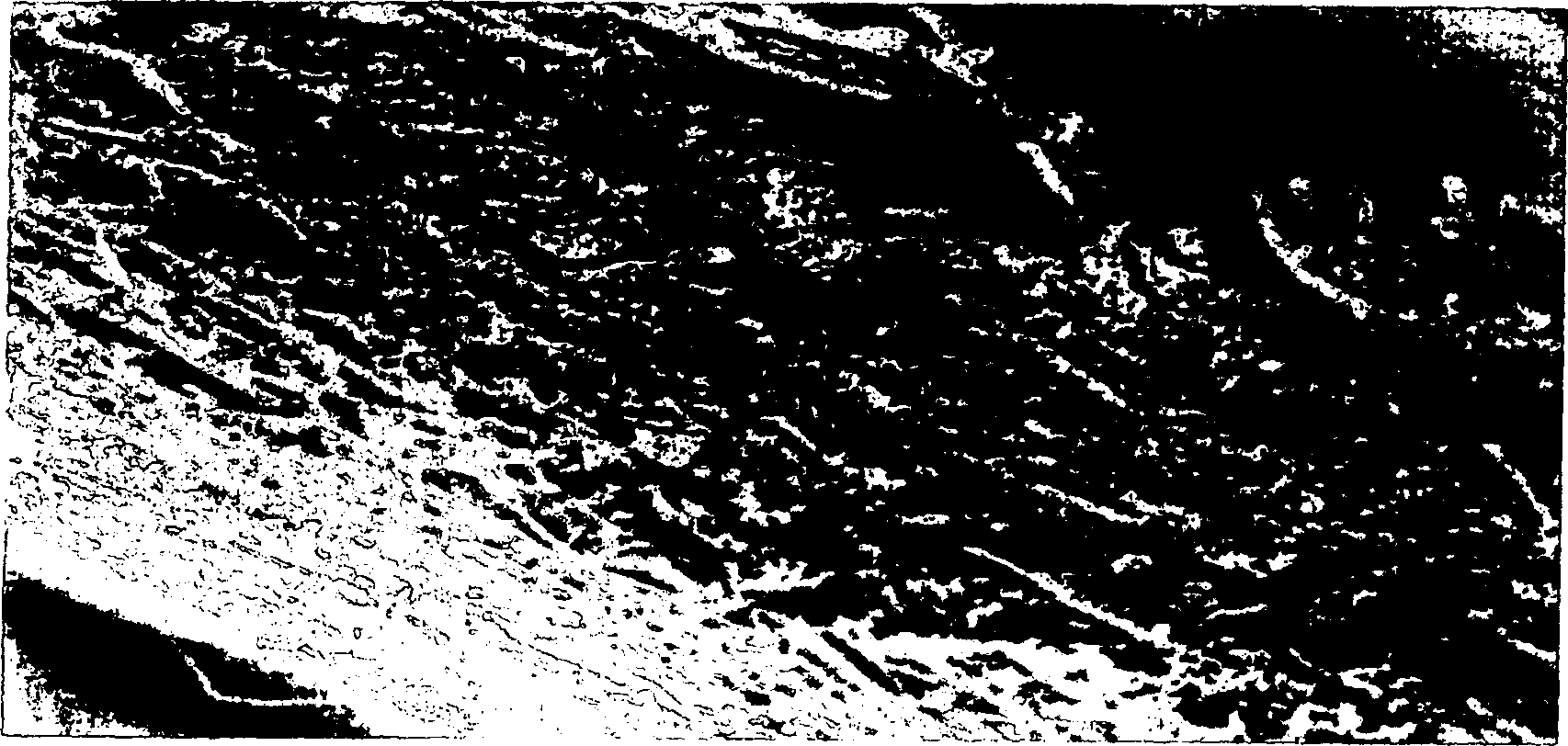Nonwoven fabric air filter for internal combustion engine
An air filter, non-woven technology, applied in the filter material for multi-layer lamination of fibers and thermal bonding structure, in the field of filters, can solve the problem of inapplicability, insufficient performance of carbon fine particles, filter technology There is no record of content or effect
- Summary
- Abstract
- Description
- Claims
- Application Information
AI Technical Summary
Problems solved by technology
Method used
Image
Examples
Embodiment 1
[0081] Polyester-based composite adhesive with a length of 5 mm, consisting of a core: polyethylene terephthalate, a sheath: a phthalic anhydride-isophthalic acid / ethylene glycol copolymer with a melting point of 150°C Synthetic fiber is the raw material fiber, and it is ejected from three discharge units located on the porous mesh conveyor belt, sucked into the air suction section located below the mesh conveyor belt, and forms a fiber layer on the mesh conveyor belt. At this time, from the upper layer side (fluid inflow side) to the lower layer side (fluid outflow side), sequentially laminate from the thick fiber layer to the fine fiber layer, and send the laminated fiber layer into a heat drying box, and use hot air to dry it. The fibers are combined to form an integrated non-woven fabric.
[0082] As the lower layer, the above-mentioned binder fiber of 2.2 dtex (thickness: 14.3 μm) was spun with the A discharge nozzle so that the weight per unit area was 110 g / m 2 . Also...
Embodiment 2
[0085] Composite with polyester fibers with a length of 5mm, consisting of a core: polyethylene terephthalate, a sheath: a phthalic anhydride-isophthalic acid / ethylene glycol copolymer with a melting point of 150°C The binder fiber is the raw material fiber, and the same method as in Example 1 is used to make a thermally bonded nonwoven fabric.
[0086] Spun separately as the lower layer, making 1.5dtex (thickness: 11.8μm) binder fibers form a weight per unit area of 100g / m 2 , As the middle layer, make 2.2dtex (14.3μm) form a unit area weight of 50g / m 2 , as the upper layer, 16.6dtex (thickness is 39.4μm) forming a unit area weight of 20g / m 2 .
[0087] After continuous lamination of each layer, send it to the hot air processor, and heat it with hot air at 165°C for 1 minute, so that the fiber interweaving points are thermally bonded, integrated, and calendered to make a thickness of 1.95mm and a weight per unit area of 180g / m 2 The air filter 2 of the present invent...
Embodiment 3
[0089] Nonwoven fabrics were produced in the same manner as in Examples 1 and 2.
[0090] As the bottom layer, 1.7dtex (thickness: 12.4μm) polyester binder fiber is used to form a basis weight of 95g / m 2 , as the lower layer, made of 4.4dtex (thickness: 20.2μm) polyester binder fiber to form a weight per unit area of 95g / m 2 , and as the middle layer, the polyester binder fiber of 6.6dtex (24.8μm) is formed with a weight per unit area of 30g / m 2 , and as the upper layer, the polyester binder fiber of 11dtex (32.0μm) is formed to have a weight per unit area of 30g / m 2 , were spun out separately.
[0091] After heat-treating the laminate with a hot air processor at 170°C, the thickness was adjusted by calendering to obtain a thickness of 2.4 mm and a weight per unit area of 250 g / m 2 The air filter 3 of the present invention. The Gurley stiffness in the longitudinal direction of this filter was 4.2 mN, and the shrinkage rate in the vertical and horizontal dimensions ...
PUM
 Login to View More
Login to View More Abstract
Description
Claims
Application Information
 Login to View More
Login to View More - R&D
- Intellectual Property
- Life Sciences
- Materials
- Tech Scout
- Unparalleled Data Quality
- Higher Quality Content
- 60% Fewer Hallucinations
Browse by: Latest US Patents, China's latest patents, Technical Efficacy Thesaurus, Application Domain, Technology Topic, Popular Technical Reports.
© 2025 PatSnap. All rights reserved.Legal|Privacy policy|Modern Slavery Act Transparency Statement|Sitemap|About US| Contact US: help@patsnap.com



